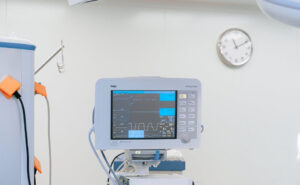Most people know that their heart is an important organ. Their bodies need it to keep functioning normally, and if the heart isn’t working properly, people can experience a wide range of symptoms, including chest pain and shortness of breath. Sometimes these symptoms may indicate coronary heart disease (CHD), which refers to narrowed or blocked arteries in the heart muscle. A doctor may recommend an angiogram—a type of test that uses dye injected into your blood vessels—to assess your risk for CHD and plan treatment options for it if necessary.
Why is an Angiogram Done
 An angiogram is an invasive procedure that allows your doctor to see the blood vessels in your heart and lungs. It’s often done if you have symptoms of a heart or lung problem, or if you’ve had a previous cardiac event such as a heart attack or stroke.
An angiogram is an invasive procedure that allows your doctor to see the blood vessels in your heart and lungs. It’s often done if you have symptoms of a heart or lung problem, or if you’ve had a previous cardiac event such as a heart attack or stroke.
Your doctor can diagnose coronary artery disease (CAD) by looking at the arteries in your heart. They may also use an angiogram to look for:
- Peripheral artery disease (also known as peripheral vascular disease)
- Cardiac arrhythmia, which is an irregular heartbeat that can cause serious health problems if it’s not treated
- Congenital heart defects, which are present at birth and can lead to dangerous complications later in life
If you have had a heart attack, your doctor may recommend an angiogram to assess the damage to your heart and plan treatment. An angiogram is a test that uses dye and X-rays to view blood vessels in your body.
During this procedure, a catheter (a tiny tube) will be inserted into one of your arteries in your arm or leg and moved up until it reaches the area where the blocked artery is located. Next, a special kind of dye called contrast material will be injected into that artery.
This dye makes it possible for your doctor to see images on a TV monitor as it flows through the blocked area of your coronary artery. The contrast material also allows any blood clots that are present in the narrowed artery to be seen on the TV screen by emitting X-rays when it passes through them and into surrounding tissue areas near it.
Other Conditions
Other conditions for which an angiogram may be done include problems with the electrical rhythm of your heart (cardiac arrhythmia), type A aortic dissection, congenital heart defects and narrowing of an artery in your limbs (peripheral artery disease).
How You Prepare
- Eat a low-fat breakfast before your test.
- Wear loose-fitting clothing that does not have zippers, buttons, or belts. You may be asked to remove all jewelry, including body piercings (even if they’re permanent).
- Have someone drive you to the appointment (or if necessary, take a taxi cab) so that you do not need to worry about getting home after the test. If possible, plan ahead and arrange for someone else to pick up your children from school or day care on the day of your angiogram so that no one has to worry about being late because of this appointment.
- Be sure to bring a list of any medications taken daily and any over-the-counter medications used in the last 24 hours (including supplements). The technicians will ask what these are and how much water or food they contain as part of their preparation for anesthesia and sedation prior to their procedure. Sometimes patients don’t think about this information until after they’ve arrived at radiology center where it could delay things even further!
Contact Us at Vein Clinic
If you think you might have varicose veins or PE, we would love to talk to you about what options are available to treat it. Our team at Milner Vein and Vascular Clinic has been helping patients like yourself get back on track with their lives for over 15 years!
Contact us today so we can help answer any questions or concerns you might have about this condition. Our doctors are highly trained and experienced to handle any type of condition related to varicose veins. Our treatment is effective and safe for you because we use state of the art technology for your comfort during the procedure.
